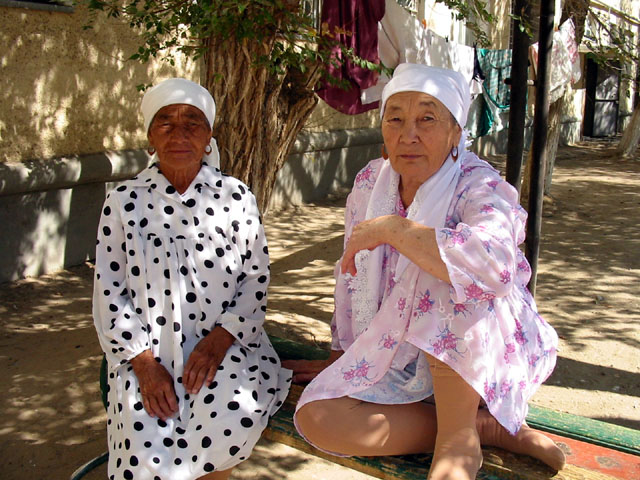Combating Elderly Poverty in Kazakhstan
 Despite making a significant economic recovery since the onset of the COVID-19 crisis, Kazakhstan still faces challenges with elderly poverty. In 2024, 413,000 Kazakh citizens received assistance through the government’s Targeted Social Assistance (TSA) program, according to official data. Although TSA provides some relief, social stigma mitigates the economic impact of a program that many say still is not enough to cover basic costs. Here is more information about elderly poverty in Kazakhstan.
Despite making a significant economic recovery since the onset of the COVID-19 crisis, Kazakhstan still faces challenges with elderly poverty. In 2024, 413,000 Kazakh citizens received assistance through the government’s Targeted Social Assistance (TSA) program, according to official data. Although TSA provides some relief, social stigma mitigates the economic impact of a program that many say still is not enough to cover basic costs. Here is more information about elderly poverty in Kazakhstan.
Lowering Poverty Rates Still Impacts the Elderly
The Asian Development Bank reported in 2023 that 5.3% of Kazakhstan’s population lived below the national poverty line. Anecdotal evidence suggests the elderly bear a substantial amount of this burden. Kazinform notes that Kazakhstan has one of the largest elderly populations in the world.
The National Library of Medicine reported that elderly citizens in Kazakhstan face substantially higher difficulties in daily life than those who live in hospitals or care centers.
Concerns Amid an Aging Population
In recent years, Kazakhstan’s population has seen a rise in its elderly retirees. Human Rights Watch notes that the government has coordinated with the United Nations (UN) to pioneer the Active Aging program.
According to Kazinform, Kazakhstan’s official state news agency, the Active Aging program established centers around the country that “improve the quality of life of older people and create a new culture of aging.” The success of these centers, in coordination with the United Nations Population Fund, highlights how proper care for the elderly is not only a growing issue in Kazakhstan but a government priority.
Though Kazakhstan has made much progress, many of its elderly citizens work side jobs to supplement their pensions and other benefits. The Targeted Social Assistance (TSA) program, Kazakhstan’s primary government program for alleviating poverty, requires participants to hold or actively seek full-time employment.
Working a formal job is not always feasible for the elderly, and Human Rights Watch notes that many elderly citizens in Kazakhstan have taken up side jobs such as cab drivers. Speaking with the United Nations Population Fund, Aigul, 63, described how her retired husband took up driving a taxi to help her support their grandchildren. Although there is an imbalance in elderly coverage by TSA, there are also promising signs of economic growth that may contribute to long-term policy solutions.
Promising Signs of Growth Despite Challenges
Last year, the International Monetary Fund (IMF) reported that Kazakhstan’s real GDP grew to 5.1% in 2023. In 2024, the IMF reported that inflation dropped to 8.7%.
The war in Ukraine poses a risk of economic uncertainty in Kazakhstan, as low oil prices and uncertain foreign investment threaten recent gains. Despite the risk, the IMF report points to signs of steady economic recovery, meaning that elderly citizens’ money can now go further to cover basic costs.
ARDAGER Improves Elderly Quality of Life
According to HelpAge, an international nonprofit that works with the elderly, ARDAGER is a Kazakhstani NGO working with the country’s elderly citizens. The United Nations describes ARDAGER’s mission statement as to “assist senior people to improve their social status through different services.”
ARDAGER provides Kazakhstan’s elderly population with critical medical, technical and quality of life support. Kazakhstan’s growing civil society, along with government coordination with the UN, are making robust strides in addressing the challenge of poverty among Kazakhstan’s elderly. Though obstacles remain, growing attention to the issue and a stabilizing economy point to a brighter future.
Looking Ahead
Elderly poverty in Kazakhstan remains a complex problem that economic growth alone cannot solve. While government initiatives like the Active Aging program and nonprofit efforts such as ARDAGER have expanded resources and awareness, challenges like social stigma and restrictive eligibility requirements continue to limit access to aid. Though obstacles remain, growing attention to the issue and a stabilizing economy point to a brighter future.
– Noah Frank
Noah is based in Ho Ho Kus, NJ, USA and focuses on Good News and Politics for The Borgen Project.
Photo: Flickr
